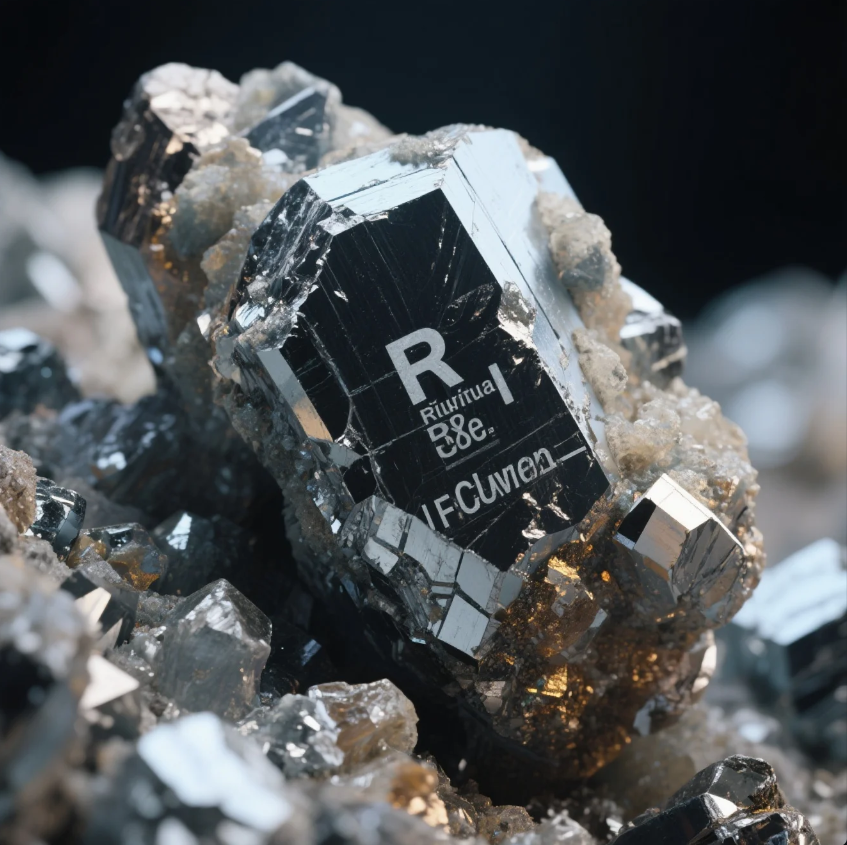What Are the Rare Earth Elements in Mineralogy?

Rare earth elements (REEs) are a group of 17 chemical elements that play a vital role in modern technology and industry. These elements are crucial for many high-tech applications, such as electronics, renewable energy, and military technologies. In mineralogy, these elements are often found together in specific minerals, making them a unique and essential group of elements for various industries.
Snippet paragraph: Rare earth elements (REEs) are a group of 17 elements that are essential for high-tech industries and found in specific minerals.
Transition paragraph: Let’s take a deeper dive into what rare earth elements are, their significance in geology, and the minerals that contain them.
What Are Rare Earth Elements in Geology?
In geology, rare earth elements (REEs) refer to a group of 17 elements in the periodic table that include the 15 lanthanides, plus scandium (Sc) and yttrium (Y). Despite their name, REEs are not actually rare in terms of abundance in the Earth's crust, but they are rarely concentrated in high enough quantities to be extracted economically. These elements are crucial in the development of high-tech devices like smartphones, wind turbines, and electric vehicle batteries.
Snippet paragraph: Rare earth elements in geology include 15 lanthanides, plus scandium and yttrium, and are essential for modern technologies.

Dive-Deeper paragraph:
Rare earth elements are unique due to their chemical properties, which make them highly effective in various technological applications. In the Earth’s crust, REEs are typically found in low concentrations and are often dispersed throughout rocks and minerals. While the elements themselves are not rare, the challenge lies in extracting them in sufficient quantities for use in industries like electronics, energy, and defense. For example, neodymium and praseodymium are used in the production of powerful magnets, and lanthanum is essential for making batteries and hydrogen storage systems.
Rare Earth Elements Overview
| Element | Symbol | Key Applications |
|---|---|---|
| Scandium | Sc | Aerospace, high-performance alloys |
| Yttrium | Y | Electronics, superconductors, LEDs |
| Lanthanum | La | Batteries, hydrogen storage |
| Neodymium | Nd | Magnets for electronics and motors |
| Praseodymium | Pr | Magnets, catalytic converters |
What Are the 7 Rare Earth Metals?
The seven rare earth metals refer to a subgroup of the rare earth elements that are used primarily in high-tech industries and applications. These metals include:
- Lanthanum (La)
- Cerium (Ce)
- Praseodymium (Pr)
- Neodymium (Nd)
- Samarium (Sm)
- Europium (Eu)
- Gadolinium (Gd)
These metals are primarily used in magnets, batteries, catalysts, and other advanced technological applications.
Snippet paragraph: The seven rare earth metals—lanthanum, cerium, praseodymium, neodymium, samarium, europium, and gadolinium—are essential for high-tech industries.
Dive-Deeper paragraph:
These seven rare earth metals are highly valuable due to their unique physical and chemical properties. Neodymium and praseodymium, for example, are critical in the production of high-performance magnets used in electric motors, hard drives, and wind turbines. Cerium is used as a catalyst in automotive catalytic converters, while samarium and gadolinium are employed in medical imaging and radiation therapy. Europium is used in phosphorescent applications, such as in television and computer screens. These metals are key to making products that are crucial for industries ranging from energy to electronics.

Seven Rare Earth Metals Overview
| Metal | Symbol | Common Uses |
|---|---|---|
| Lanthanum | La | Batteries, hydrogen storage |
| Cerium | Ce | Catalysts, polishing, automotive |
| Praseodymium | Pr | Magnets, aerospace |
| Neodymium | Nd | Magnets, wind turbines, electric motors |
| Samarium | Sm | Magnets, medical imaging |
| Europium | Eu | Phosphorescent applications |
| Gadolinium | Gd | Medical imaging, radiation therapy |
What Are the 5 Rare Earth Elements?
While the 17 elements in the rare earth group are all important, five elements are often highlighted for their wide usage and importance in various technologies. These five include:
- Lanthanum (La)
- Cerium (Ce)
- Neodymium (Nd)
- Europium (Eu)
- Yttrium (Y)
These elements are widely used in high-tech applications such as electronics, lighting, energy, and magnets.
Snippet paragraph: The five key rare earth elements—lanthanum, cerium, neodymium, europium, and yttrium—are crucial for a variety of technological applications.
Dive-Deeper paragraph:
The five key rare earth elements are especially critical in the development of technologies that power our modern world. Neodymium, for instance, is essential for the production of powerful magnets used in everything from headphones to wind turbines. Yttrium is used in the production of superconductors and LED lights. Europium plays a significant role in phosphorescent materials used in display screens. Cerium is widely used in automotive catalytic converters, and lanthanum is essential for making energy-efficient batteries and hydrogen storage solutions. These elements are indispensable for the advancement of clean energy, electronics, and healthcare technologies.
Five Key Rare Earth Elements
| Element | Symbol | Key Applications |
|---|---|---|
| Lanthanum | La | Batteries, hydrogen storage |
| Cerium | Ce | Catalysts, automotive, polishing |
| Neodymium | Nd | Magnets for electronics, motors, turbines |
| Europium | Eu | Phosphorescent materials, screens |
| Yttrium | Y | Superconductors, LED technology |
What Minerals Are Considered Rare Earth Minerals?
Rare earth minerals are naturally occurring minerals that contain one or more rare earth elements. Some of the most common rare earth minerals include:
- Bastnäsite (a major source of cerium, lanthanum, and neodymium)
- Monazite (rich in cerium, lanthanum, and thorium)
- Xenotime (mainly contains yttrium and other REEs)
- Apatite (a phosphate mineral containing rare earth elements)
- Allanite (a silicate mineral containing various REEs)
These minerals are typically extracted and processed to isolate rare earth elements, which are then used in various industrial applications.
Snippet paragraph: Rare earth minerals, such as bastnäsite, monazite, and xenotime, contain one or more rare earth elements essential for industrial uses.
Dive-Deeper paragraph:
Bastnäsite is one of the most important rare earth minerals, containing significant amounts of cerium, lanthanum, and neodymium. Monazite, another crucial rare earth mineral, is rich in cerium, lanthanum, and thorium and is often found in heavy mineral sands. Xenotime is a mineral that primarily contains yttrium and is used as a source of yttrium and other REEs. Apatite, which is generally a phosphate mineral, can also contain significant amounts of rare earth elements. These minerals are mined and processed to obtain the rare earth elements that are vital for many high-tech applications.
Common Rare Earth Minerals
| Mineral | Key Rare Earth Elements Contained | Common Uses |
|---|---|---|
| Bastnäsite | Cerium, lanthanum, neodymium | Magnets, electronics, energy technologies |
| Monazite | Cerium, lanthanum, thorium | Mining of rare earth elements |
| Xenotime | Yttrium, other REEs | Electronics, lighting |
| Apatite | Various REEs | Fertilizers, rare earth extraction |
| Allanite | Various REEs | Mineral extraction for high-tech uses |
Conclusion
Rare earth elements are essential to many high-tech applications, and understanding the minerals that contain them is key to extracting and using these valuable resources. Minerals like bastnäsite, monazite, and xenotime are primary sources of rare earth elements like neodymium, yttrium, and lanthanum, which power modern technology and green energy solutions.







